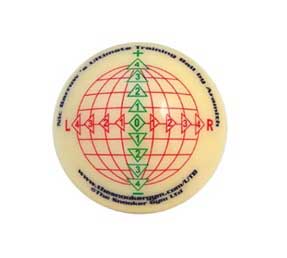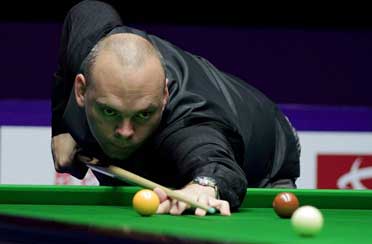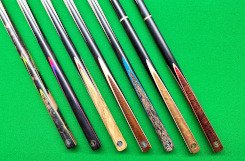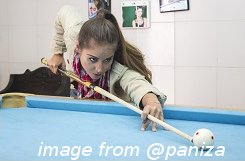Improving your aim in billiards
As mentioned in one of our previous articles that the stance adopted when taking your shots is crucial to get correct to allow you to play your shots more accurately. By this stage your stance should be feeling natural to you and you can now concentrate on improving your actual cue action once at the table. There are two key areas that require practice to improve your game and these are the warm up strokes and the follow through with the cue once the object ball has been struck!
There are not many sports that allow you to practice your shots while in position, the other great game of golf allows you to take practice swings before striking the ball and exactly the same principle is allowed in snooker, pool or billiards. Taking the practice strokes will allow you to determine that you will strike the cue ball cleanly and in the right area to give spin if required, by not using your practice strokes can lead to errors and it will not make you feel comfortable when playing your shots.

You will often hear the phrase “feathering” when talking about the practice shots and this is exactly what you are doing, you are aiming your cue without actually striking the ball. Most professional players will take 5-6 practice strokes before playing their shots, there is no need to rush so make most use of this time.
Feathering allows you to determine the pace of the shot required, making sure that your cue action is smooth and help you to aim more accurately.
Some of the more simpler strokes may not need as many warm up strokes but you need to know that when you make the final stroke it will be accurate and over time you will just know in your head when you are ready to play your shot.
During the warm up strokes you should be watching for some key elements, the only movement should be in your cueing arm with the body remaining perfectly still, the cue should follow a straight path all the way through the shot.
The pace of the shot starts at zero when you go to the table, when you determine the pace of the shot you need to ensure that the pace goes from zero to the correct speed when you strike the cue ball, hence the warm up strokes.
When listening to players discussing their cueing action you will often hear them using the word “transition” so what does this relate to! The transition is when your cueing arm has been taken back to its most reverse position and then moves forward to make the stroke to be played. During this stage the cue should be kept straight and the action smooth. Novice players may have a jerky movement during this stage which diminishes the accuracy of the shot.
There should be no tension in the cueing arm and the shot should be played smoothly and at the correct speed for the required shot to be played. Novice players may also stop the cue dead when they strike the cue ball, this is not good practice as this will affect the speed that the shot is played and also may affect the accuracy when striking the ball. It is far better to apply a smooth follow through with the cue after the object ball has been struck to maintain the smooth flow of the cueing action.

With practice any jerky movement will decrease and your shots will feel smoother when you are playing them thus reducing any unnecessary tightening of the cueing arm. Over a period of practice sessions you will know when your shots feel right and you will be more relaxed in your general game, over more time this will all become automatic to you and your brain will control your cueing arm without you even have to think so much about what you are trying to achieve!
One large mistake many players new to the game may make is when applying spin to the object ball, they try to aim the cue into the angle of the spin. They believe this may help them achieve a better spin but in fact it makes matter worse. Keeping the cue straight throughout the shot will allow you to strike the cue ball in the correct area to apply the correct spin needed.
So as you can see there are a few elements to playing the correct shot that link together to improve your game. The correct stance, feathering your shot, applying the correct speed and following through correctly will vastly improve your game when they all fall into place and you feel comfortable at the table.
As mentioned above these will all fall into place with regular practice and you may not even realize how your shots are improving as you start get the sequence to fall into place without even thinking about it.

